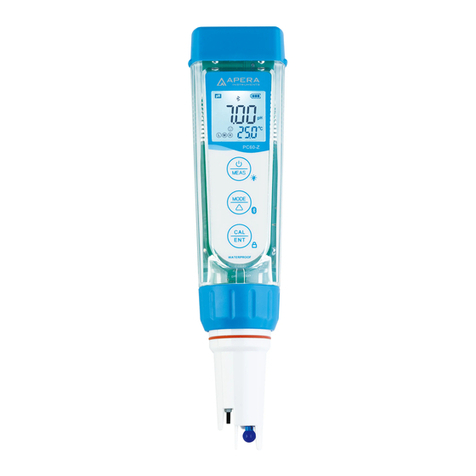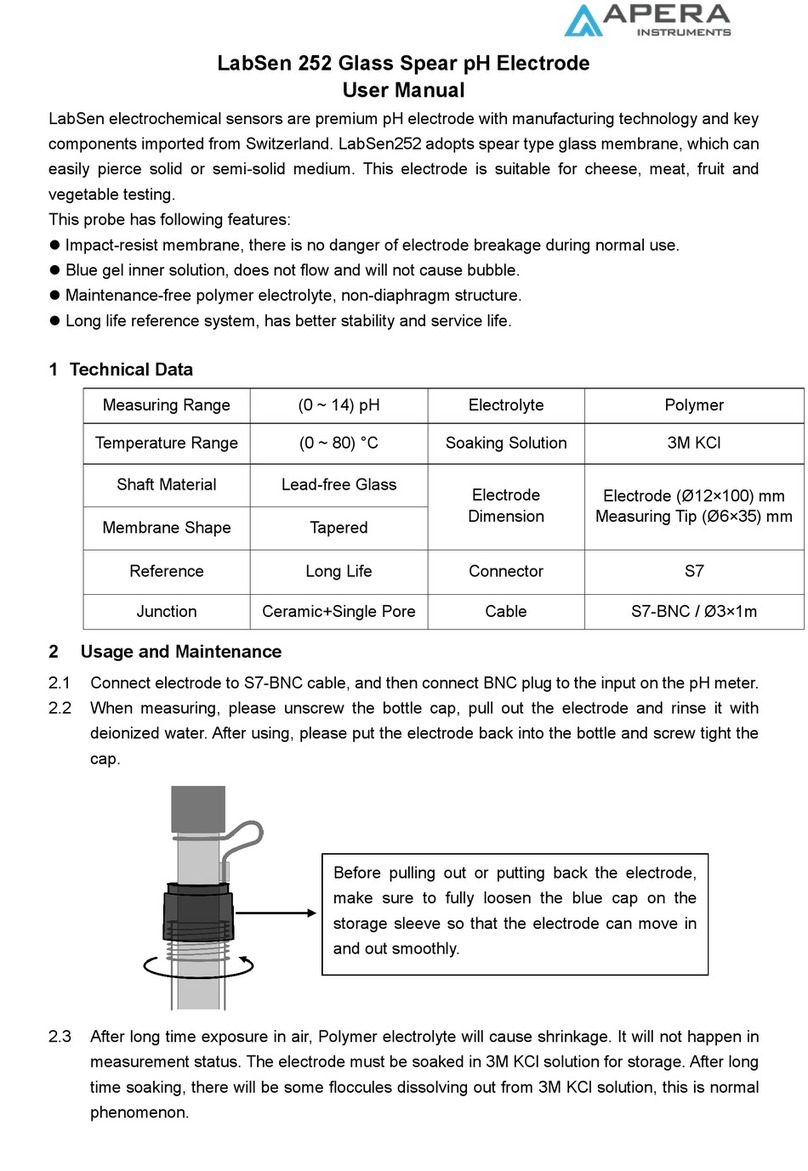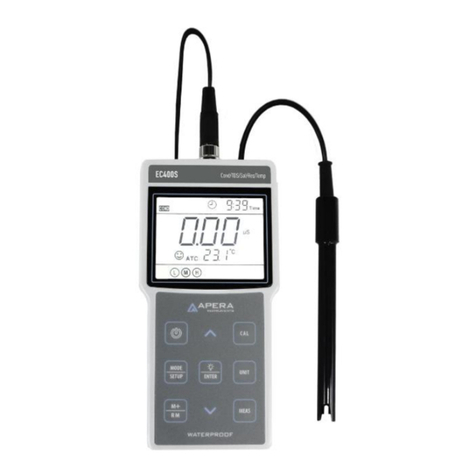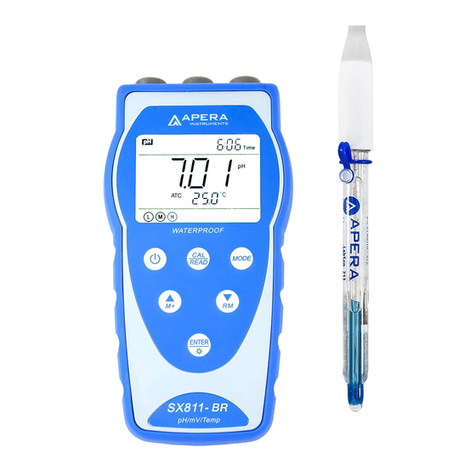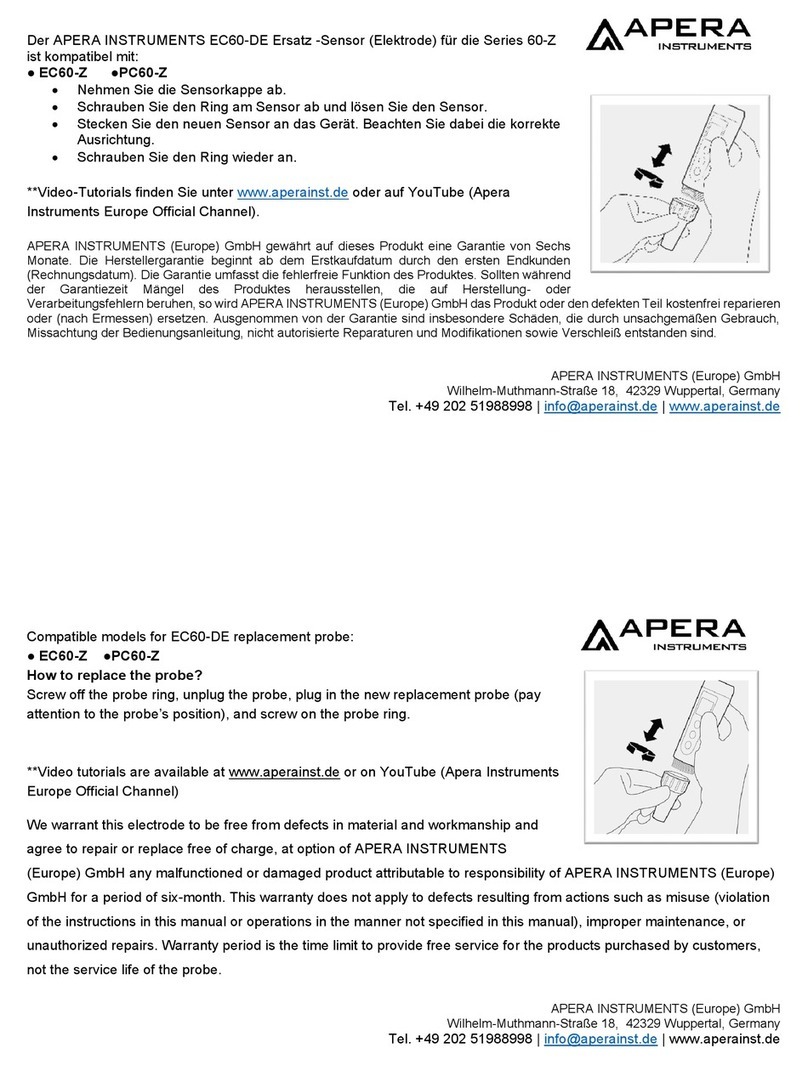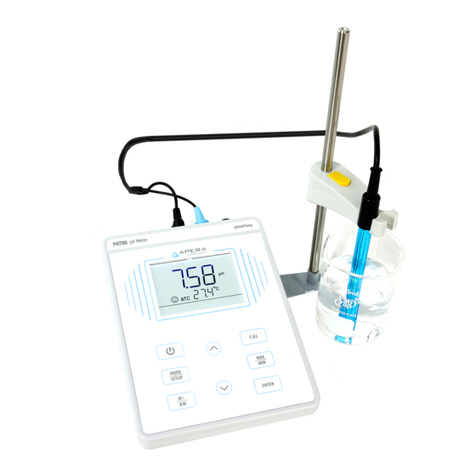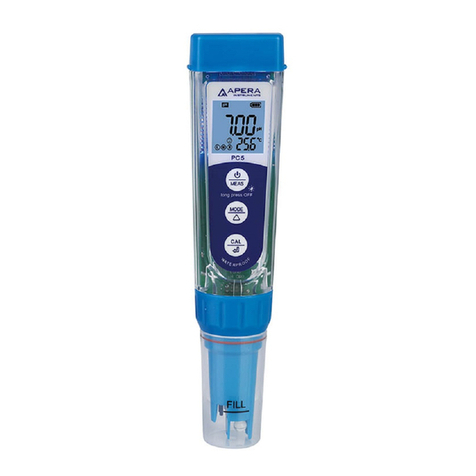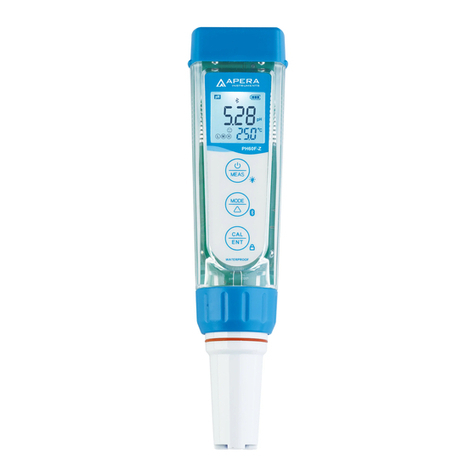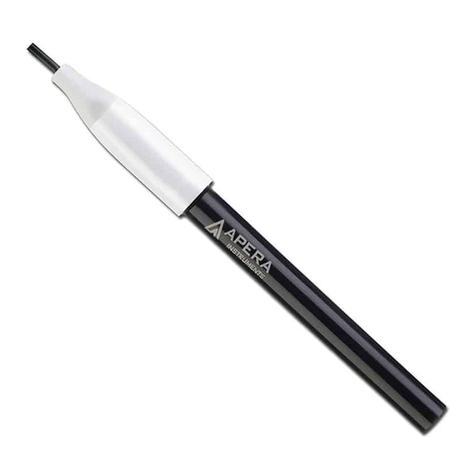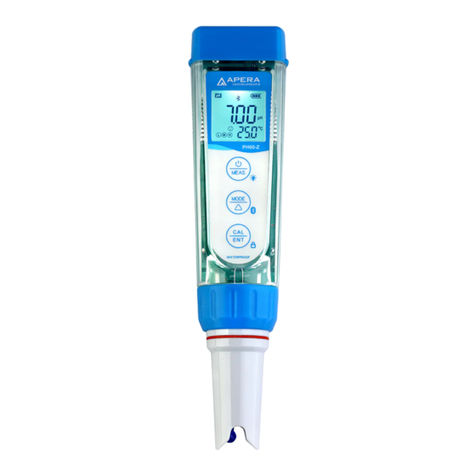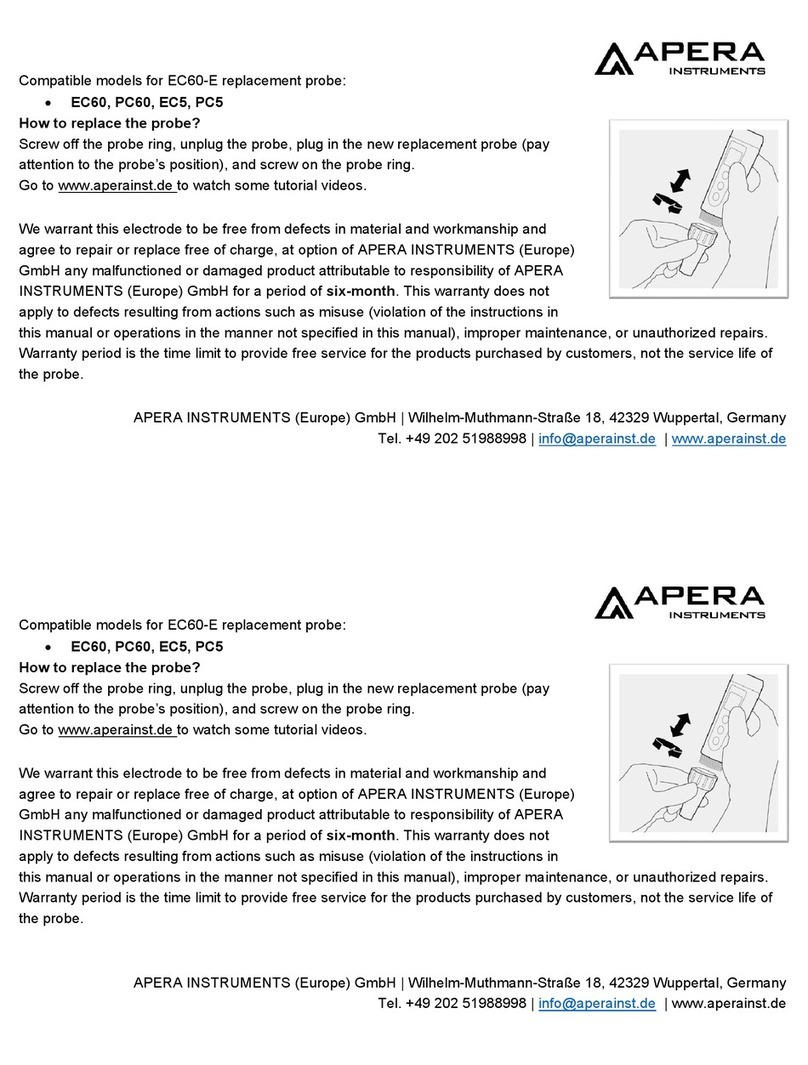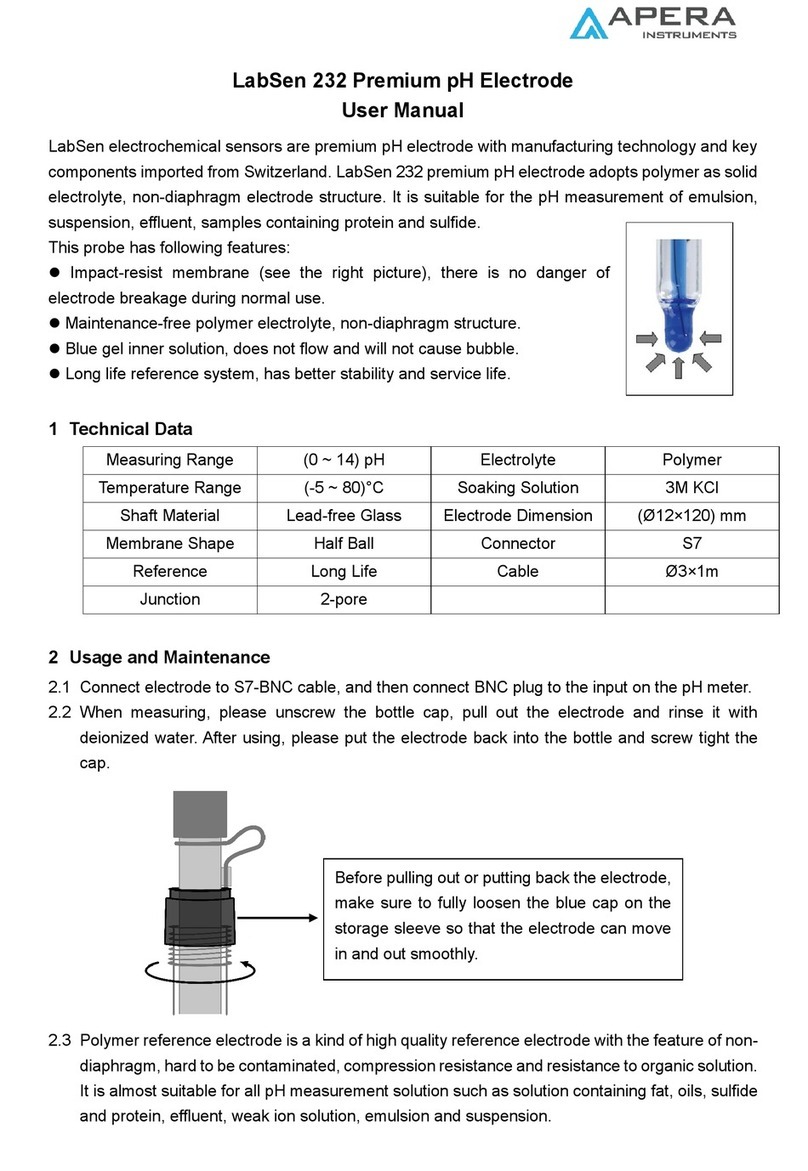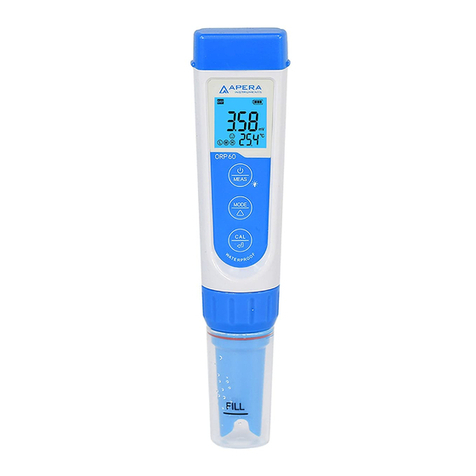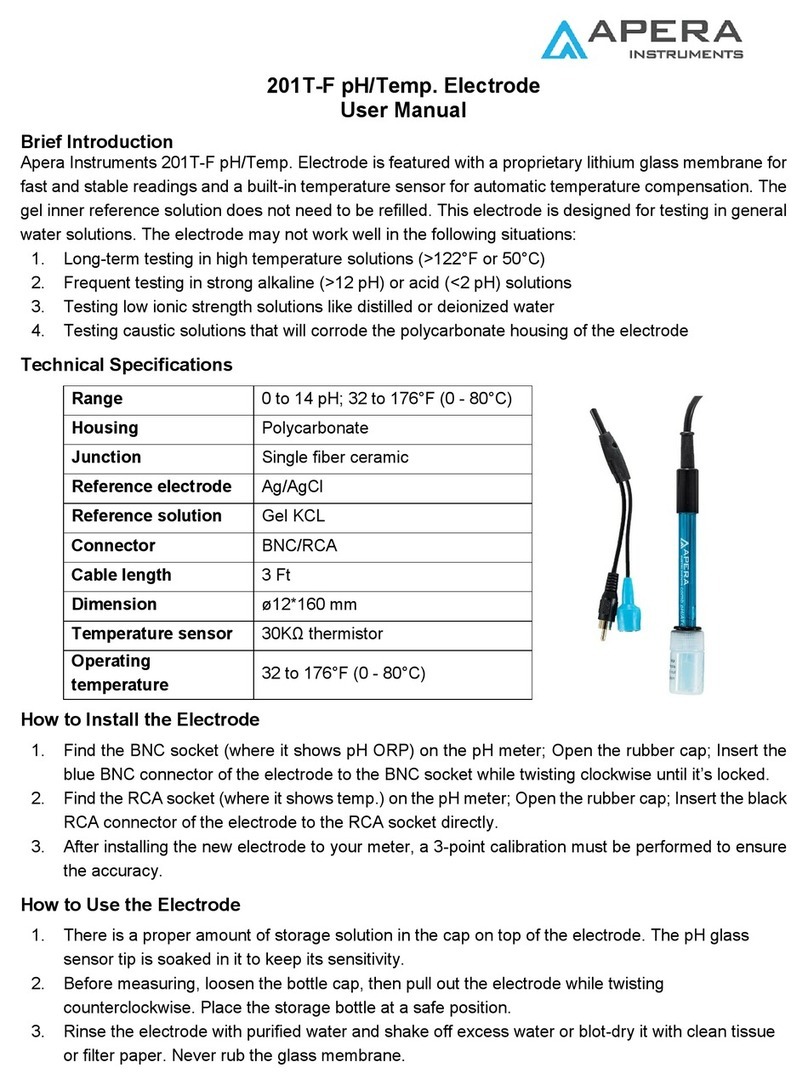5.4 Salinity Compensation
The instrument has manual salinity compensation. It is set in the parameter P2 (0 to 45 ppt).
To obtain accurate readings in mg / L and ppm, it is necessary to know the salinity of the
solution to be tested and input it into the instrument. As the salinity of the solution increases,
the level of DO decreases.
*Freshwater salinity is typically 0 to 0.5 ppt, salinity of sea water 35 ppt.
6 Calibration
6.1 Saturated Oxygen Calibration
(A) This procedure requires the use of a calibration sleeve to allow the probe to be
calibrated in a humidity-saturated atmosphere
(B) Check the sponge in the calibration sleeve, and make sure it is slightly wet. Attach
the calibration sleeve to the probe. Tighten the locking cap. Be careful not to have
water droplets on the head of the luminescent sensor cap. Wait for 5 to 10 minutes
after turning on the instrument so that the air in the calibration sleeve will be saturated
by water vapor. In addition, wait for the temperature to be completely stablized.
(C) Long press the key to enter the calibration mode, and the CAL is flashing in the
upper right corner of the LCD. Wait for the stable icon to appear and stay, press
the key to calibrate, once the instrument displays a stable 100%, it is ready to
use.
6.2 Zero-Oxygen Calibration
Zero-Oxygen calibration is only performed when a probe or sensor cap is replaced or the
probe has not been used for a long period. It is usually not necessary to conduct zero oxygen
calibration. The instrument is factory calibrated for zero oxygen, so it is not necessary to
perform a zero-oxygen calibration for the first time. Zero-oxygen calibration follow these
steps:
(A) preparation of 100ml of oxygen-free water: in the 100ml beaker weigh 2g
anhydrous sodium sulfite (Na2SO3) and add 100ml of pure water or tap water to
dissolve. Oxygen-free water is effective within 1 hour.
(B) Put the electrode into the oxygen-free water, wait for 3 to 5 minutes after the
instrument is turned on, and wait for the temperature and measured value to
completely stabilize. The measured value should be very low, 0.1mg / L or so.
(C) Long press to enter the calibration mode. The upper right corner of the LCD will
flash CAL. Wait for a stable icon. Press and the zero-oxygen calibration is
completed.
6.3 Special Notes for Calibration
(A) Optical dissolved oxygen probes have better stability and smaller calibration drift
compared to conventional galvanic or polaragraphic dissolved oxygen electrodes,
which means that the instrument can maintain its calibration data for a few months.
However, for better accuracy, it is recommended that the oxygen saturation
calibration be performed according to section 6.1 before use every day.
(B) Drying of the surface coating of the luminescent sensor cap can adversely affect the
stability of the measurement. Please pay special attention to this situation. See
Section 4.2 (Probe Maintenance) for details.













